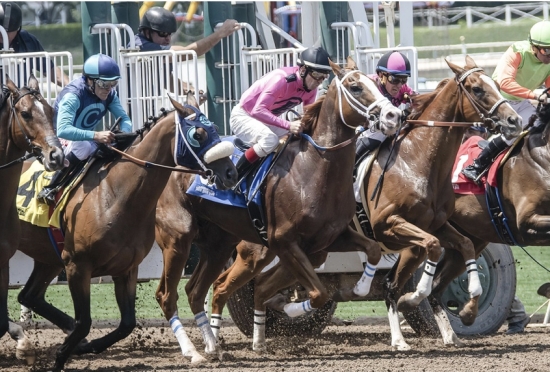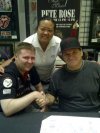For many casual fans, the Preakness is just the “next race” after the Kentucky Derby. But for serious bettors, it’s a whole different story. This race is about figuring out which horses are ready to handle Pimlico’s unique challenges, who’s fresh enough after the Derby, and who can make the most of the track’s conditions. Some horses love a quick turnaround, while others need more time to recover—those little details make all the difference!
If you're planning to place some bets for the 2025 race, here’s what you need to keep in mind before the field hits the track.
What Pimlico Tells Us Before the Gates Even Open
Pimlico’s track is older and wears differently than newer tracks, which can affect how horses perform. It’s 1 3/16 miles long, a bit shorter than the Derby’s 1 1/4 miles. While the difference seems small, it actually changes the race’s pace. Horses that struggled in the longer Derby might do better here, and that’s where you can find hidden value.
Another factor bettors should watch is the track’s sensitivity to weather. Pimlico’s drainage system isn’t on par with more modern tracks, so it turns sloppy fast if rain hits. Mudders or horses known to thrive in wet conditions gain a real edge. In the past, sloppy tracks have upended expectations, rewarding those who looked beyond the morning line odds and dug deeper into form and running styles.
With all that in mind, bettors should treat the forecast as intel. It’s a signal that can cause Preakness 2025 odds to move sharply in one direction or another. Besides thinking about track conditions, bettors must look for where the value opens up. If early-week rain softens the surface and favors off-track runners, sharp money might start flowing toward overlooked mudders. But if things dry out by the third Friday of May, expect speed horses to take late action and odds to shift fast.
If not, expect the odds board to move sharply as bettors adjust to changing conditions. History has shown, especially in 2015 and 2018, how a wet Pimlico can completely change the expected outcome.
Who Could Be the Ones to Beat?
With the Kentucky Derby still in motion, the Preakness shortlist is built on well‑placed whispers, workout buzz, and sharp‑eyed form watchers. Some names drawing the loudest early chatter are Citizen Bull, Getaway Car, Gaming, Madaket Road, and Caldera. Each brings a different weapon to a race, often rewarding bold pace moves and fresh legs.
Citizen Bull remains the glamor colt despite his flat fourth in the Santa Anita Derby. Baffert’s champion juvenile owns the fastest two‑year‑old figure in the crop, and barn insiders say his last piece of work over the deeper Santa Anita surface showed the snap that went missing on race day.
Stablemate Getaway Car supplies pure speed. His nose win in the Sunland Park Derby proved he can dig in when pressed, and if the Preakness pace goes soft, he could make every pole a winning one.
Meanwhile, Gaming is the wild card. He beat Citizen Bull in the Del Mar Futurity last summer, lost his way this spring, and started to sparkle again in recent six‑furlong drills. Handicappers who like rebound stories are watching him like hawks.
Two “new shooters” round out the quintet. Madaket Road ran a brave second in the Rebel after carving out strong fractions and skipped the Derby trail to arrive in Baltimore with gas in the tank. His morning gallops have been described as “push‑button,” and a clean break could put him on the front end early.
On the opposite tactical spectrum sits Caldera, the giant gray Lukas colt nosed out by Getaway Car at Sunland. Lukas added blinkers after that photo finish, and observers at Oaklawn swear the colt is more focused than ever. Caldera’s grinding style could turn the stretch into a gray blur if the leaders melt in a speed duel.
What the Form Tells Us and How to Bet It Right
Past performance doesn’t guarantee a win, but it sure gives clues. Bettors must look at how these horses performed in the last 30-60 days. Horses who run consistent speed figures above 90, especially on tracks with similar conditions to Pimlico, tend to translate that form well.
Form cycles are critical here. A horse peaking two weeks before the Derby might be tapering off. Others might just now be hitting their stride. That’s why watching workouts leading into the Preakness is important. Morning gallops and timed breezes offer more than just times. Watch how effortlessly a horse moves. Does it look locked in or struggling?
Betting isn’t just about picking the horse you think will win. There are different ways to bet, each giving you a different chance to win and a different level of risk.
Basic bets, like win, place, and show, are good starting points. A win bet means you think the horse will finish first. Place means first or second. Show means the horse just has to finish in the top three. These are simpler and usually safer, but they don’t always pay a lot.
Then there are exotic bets, which are a bit harder but can pay a lot more. These include bets like exactas (picking the first two finishers in the exact order), trifectas (picking the top three in order), and superfectas (picking the first four). These kinds of bets are tougher to get right, but if you do, the payout can be big. That’s why experienced bettors use them when they feel confident about how the race will go.
What the Experts Are Whispering
Behind the scenes, insiders aren’t just watching which horses are entered. They’re also watching how they're being managed. One major conversation in betting circles is around fresh entries skipping the Derby.
Horses that sit out Louisville often arrive at Pimlico sharper, less taxed, and strategically positioned. Analysts are already tracking workout reports, noting which horses are breezing easily and showing good recovery in gallops. That data might not make headlines, but for sharp bettors, it’s gold.
There’s also growing attention on trainer moves, especially from barns with multiple contenders. It's rarely random when a horse with enough points gets pulled from the Derby in favor of extra rest. That decision often signals a better fit for the Preakness's distance and pace. Handicappers are also watching jockey assignments. If a top rider sticks with a horse skipping the Derby, that loyalty can be a quiet vote of confidence.
Final Thoughts
When the roar fades and the trophy photos wrap, smart bettors don’t close the notebook. They flip to a clean page. Whatever unfolds in the stretch this year will ripple straight into Belmont angles, summer stakes matchups, and even next year’s breeding shed chatter. Use Preakness 2025 as both a result and a data point. File the trip notes, log the track bias, and record who galloped out with gas still in the tank. That discipline is how casual fans turn into consistent winners.




Comments powered by CComment